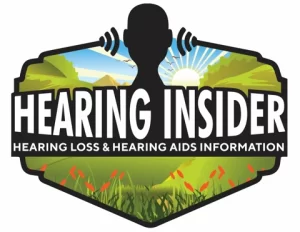Updated for 2025: Sensorineural hearing loss (SNHL) occurs when damage to the inner ear’s hair cells or the auditory nerve disrupts how sound is transmitted to the brain. While SNHL is typically permanent, modern treatments—now enhanced by artificial intelligence (AI)—offer better speech clarity, improved background noise reduction, and more natural listening experiences than ever before.
Sensorineural hearing loss (SNHL) is the most common form of permanent hearing loss, affecting over 90% of hearing aid users. It occurs when the tiny sensory hair cells in the cochlea or the auditory nerve pathways become damaged, preventing sound from being transmitted efficiently to the brain.
Causes of SNHL

- Aging (Presbycusis): Nearly one in three adults over 65 experiences some degree of age-related cochlear degeneration.
- Noise Exposure: Loud machinery, concerts, or earbuds at high volume can cause permanent damage.
- Genetics: Family history may predispose individuals to earlier or more severe hearing loss.
- Sudden Viral Infections: Viral or autoimmune inner ear disease can cause sudden SNHL, requiring urgent treatment.
- Ototoxic Medications: Certain antibiotics, chemotherapy drugs, and even high-dose aspirin can damage the cochlea.
Permanence of SNHL
Unlike conductive hearing loss (which is often reversible), SNHL is usually irreversible because hair cells cannot regenerate. Early detection and treatment are critical: the longer loss goes untreated, the harder it is for the brain to adapt later.
Still, modern treatments—especially AI-powered hearing aids and implants—offer major improvements in clarity, background noise suppression, and listening comfort. While they don’t “cure” SNHL, they optimize the brain’s access to sound and improve quality of life.
Hearing Aids and Common Side Effects
Hearing aids are the primary treatment for SNHL. While overwhelmingly beneficial, many new users have concerns about potential side effects. Most are temporary, mild, and correctable with adjustments.
Do Hearing Aids Cause Headaches?
Some users report headaches in the early weeks of use due to the sudden influx of sound. The brain is “working out” again. Headaches usually resolve as adaptation occurs, though adjustments to gain or noise reduction can help.
👉 Do Hearing Aids Cause Headaches?
Can Hearing Aids Cause Ear Infections?
Hearing aids don’t directly cause infections but can create a warm, moist environment if not cleaned properly. Regular cleaning and drying are essential.
👉 Can Hearing Aids Cause Ear Infections?
Itchy Ears and Allergic Reactions
Other Common Side Effects
- Occlusion effect: “Plugged up” or echo sensation.
- Feedback whistling: Often caused by poor fit or earwax.
- Jaw discomfort/pressure: Earmold fit issues.
👉 Side Effects of Hearing Aids
The Brain and Hearing Aids: Adaptation & Cognitive Health
Hearing aids don’t just amplify sound—they retrain the brain. After years of deprivation, the auditory cortex reorganizes itself. Amplification requires neuroplasticity, which takes weeks to months.
Hearing Aids and Brain Adaptation

Cognitive Fatigue and Hearing Aids
Hearing loss increases listening effort, leaving people mentally drained. Hearing aids reduce this cognitive load.
Hearing Loss and Falls: How Hearing Aids Help
Even mild hearing loss triples fall risk. Amplification restores sound cues and improves safety.
Modern Treatments for Sensorineural Hearing Loss
Since SNHL is permanent, treatment focuses on rehabilitation. Options in 2025 include:
1. Hearing Aids
AI-powered hearing aids now act like personalized sound processors with:
- Better speech-in-noise separation
- Direct connectivity to devices
- Lifestyle customization
2. Cochlear Implants
For severe to profound SNHL, implants bypass damaged hair cells and stimulate the auditory nerve.
3. CROS and BiCROS Systems
For single-sided deafness, these devices transfer sound from the poorer ear to the better ear.
4. Sudden-Onset SNHL Treatments
Corticosteroids may restore hearing if given within 72 hours. Seek urgent ENT care.
Professionally Fit Hearing Aids
Professional fittings remain the gold standard for treating SNHL.
Benefits of Professional Fitting
- Full evaluation with audiogram and speech testing
- Custom programming using real-ear measurements (REM)
- Tailored physical fit
- Ongoing care with adjustments and updates
AI-Powered 2025 Models
- Phonak Audeo Sphere – Auto-learns daily habits
- Oticon Intent – Uses head movement for clarity
- ReSound Vivia – Real-time binaural suppression
Everyday Benefits
- Better clarity in noise
- Reduced fatigue
- Natural phone/video calls
- Easier group conversations
Self-Fit OTC Hearing Aids
Since the FDA’s 2022 ruling, over-the-counter (OTC) hearing aids are widely available for mild–moderate SNHL.
Advantages
- Affordable
- Accessible without appointments
- User-controlled via apps
Limitations
- Not strong enough for severe loss
- No real-ear verification
- Limited follow-up care
AI in OTC Models
Many 2025 OTC devices now include:
- Self-calibration apps
- Noise reduction algorithms
- Custom sound profiles
👉 [OTC vs Traditional Hearing Aid Costs]
Cochlear Implants and CROS/BiCROS Systems
Cochlear Implants
For those with poor benefit from hearing aids, implants restore functional communication.
Benefits in 2025:
- Wireless streaming
- Improved electrode designs
- Expanded candidacy
CROS and BiCROS Systems
- CROS: Transfers sound from deaf ear to good ear
- BiCROS: For when the better ear also has loss
These help with localization, awareness, and safety.
Factors to Consider When Choosing Treatment
Severity of Loss
- Mild–moderate: OTC or professional aids
- Severe–profound: Implants, CROS/BiCROS
Speed of Onset
- Gradual: Often age/noise → hearing aids
- Sudden: Possible viral → urgent ENT care
Lifestyle & Communication
- Frequent calls → Bluetooth aids
- Social settings → AI noise suppression
- Active lifestyle → water-resistant models
Budget & Access
OTC aids are cheaper, but professional care offers higher long-term satisfaction.
Key Takeaways
- SNHL is permanent, but treatments restore clarity and quality of life.
- Side effects are temporary and manageable.
- Rehabilitation is a process requiring brain adaptation.
- Treating hearing loss protects brain and body health.
Early evaluation by an audiologist is the essential first step.
Explore More on Hearing Insider
Dive deeper into related guides:
- Do Hearing Aids Cause Headaches?
- Can Hearing Aids Cause Ear Infections?
- Itchy Ears and Hearing Aids
- Allergic Reactions to Hearing Aids
- Side Effects of Hearing Aids
- Hearing Aids and Brain Adaptation
- Cognitive Fatigue and Hearing Aids
- Hearing Loss and Falls: How Hearing Aids Help
- OTC vs Traditional Hearing Aid Costs
- Recommended Hearing Aids for 2025

